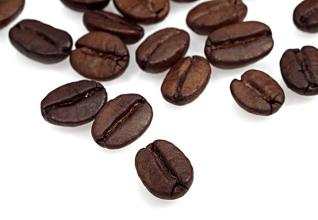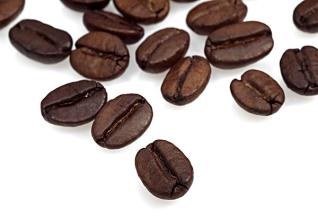Red Cherry Project Sidamo Coffee Bean Flavor description of taste variety producing area
Red Cherry Project Sidamo Coffee Bean Flavor description of taste variety producing area
In order to better understand the "Red Cherry Project", I have also done some homework to share with you.
Operation Cherrie Red's "Red Cherry Project" (ORC) is a project to improve the quality of small-scale farms, mainly to encourage soybean farmers and surprise roasters. Trabocca, the largest coffee bean manufacturer in the Netherlands, invited all Ethiopian farms to produce small batches of beans of about 1500-3000 kg (25,050 bags) before the harvest season. Women can only choose fully 100% ripe red cherries, which varies greatly in flavor. So attentive and industrious Ethiopian women are important drivers of the Red Cherry Project.
The red cherry program is also a reinforcing method, which makes the farm pay more attention to the process of selecting beans, and the prices of these coffees are relatively high. Red cherries have water washing, sun-drying beans, half-washing, half-sun, experimental coffee and so on. The main producing areas are Yega Sheffield, Sidamo, Punga Forest, Lekanti, Ken Bata, Iruba, Hara, Lim, etc., and joined Coroja Golocha in 2011 (near Harald). These are all unique flavors and can fully show the flavor of Ethiopian coffee. Trabocca will choose from it when he receives the coffee. Farms that pass the cup test quality test in Ethiopia and the Netherlands will pay a high bonus, with a passing score of more than 88 points to become a good coffee for the Red Cherry program. Trabocca, the promoter of the Red Cherry project, invested all the profits earned in the past few years in the cooperative farm. Trabocca stressed that this is a plan with no profit, so the company only uses four people, including the boss and secretary, to implement the red cherry project, and other administrative related matters are supported by the parent company to reduce administrative expenses, and all the profits are returned to the cooperative farm.
The unique fragrance of Yirgacheffe comes from Yirga, a small town in the northwest of Sidamo province. Yirgacheffe coffee raw bean is one of the most distinctive coffee in the world, rare and expensive. It is produced in the plateau of Ethiopia's Sidamo province (2000 meters above sea level). It is an outstanding representative of washed coffee in Africa. It has always been famous in the eyes of global coffee connoisseurs. Rare washed high-quality Elaraby plus coffee, suitable for all degrees of baking, perfectly showing a fresh and bright aroma of flowers and fruits. Beautiful and complete bean shape, is the general mocha incomparable high-grade coffee. It has unique fruit aromas of citrus and lemon, with aromas of jasmine, sour taste similar to wine, clean and unmixed taste, just like freshly boiled citrus fruit tea with a long finish. Full of floral and citrus aroma, the performance is exciting, moderate roasting has a soft sour taste, deep roasting gives off a strong aroma, rich and uniform taste is the most attractive feature of Ethiopian Yega snow coffee, known as the best coffee beans in Ethiopia, is the representative of East African boutique coffee, and Yega snow coffee is the most unique coffee in the world today.

Important Notice :
前街咖啡 FrontStreet Coffee has moved to new addredd:
FrontStreet Coffee Address: 315,Donghua East Road,GuangZhou
Tel:020 38364473
- Prev

Coffee bean red wine treatment method flavor description characteristics processing and growth process
Coffee bean red wine treatment flavor description characteristics processing growth process next, let's talk about the specific process of fermentation. First of all, Colombian farmers carefully pick coffee cherries and carefully select coffee red fruits to ensure that among the coffee cherries selected for processing, the percentage of immature cherries is less than 2%, defective beans less than 3%, and floating beans less than 5%. Pick
- Next

Introduction to the production area of medium-roasted and deep-roasted coffee beans by taste treatment
Description of the degree of flavor of medium-roasted and deep-roasted coffee beans the area where roasting is introduced, as the name implies, is to provide heat to coffee beans, causing a series of chemical changes inside. First of all, the starch in raw beans will be converted into sugars and acids because of high temperature, while substances such as cellulose will be carbonized differently. Water and carbon dioxide will evaporate, and protein will be converted into
Related
- Guji coffee producing area of Guji, Ethiopia: Humbela, Shakiso, Wulaga
- What is the most expensive variety of Qiloso in BOP multi-variety group?
- How to store the coffee beans bought home?
- Why are Yemeni coffee beans so rare now?
- Ethiopian Sidamo all Red Fruit Sun Sun Santa Vini Coffee beans
- SOE is mostly sour? What does it mean? Is it a single bean? what's the difference between it and Italian blending?
- Is Italian coffee beans suitable for making hand-brewed coffee?
- How to choose coffee beans when making cold coffee? What kind of coffee beans are suitable for making cold coffee?
- Just entered the pit to make coffee, what kind of coffee beans should be chosen?
- Can only Japan buy real Blue Mountain Coffee? What are authentic Jamaican Blue Mountain coffee beans?

